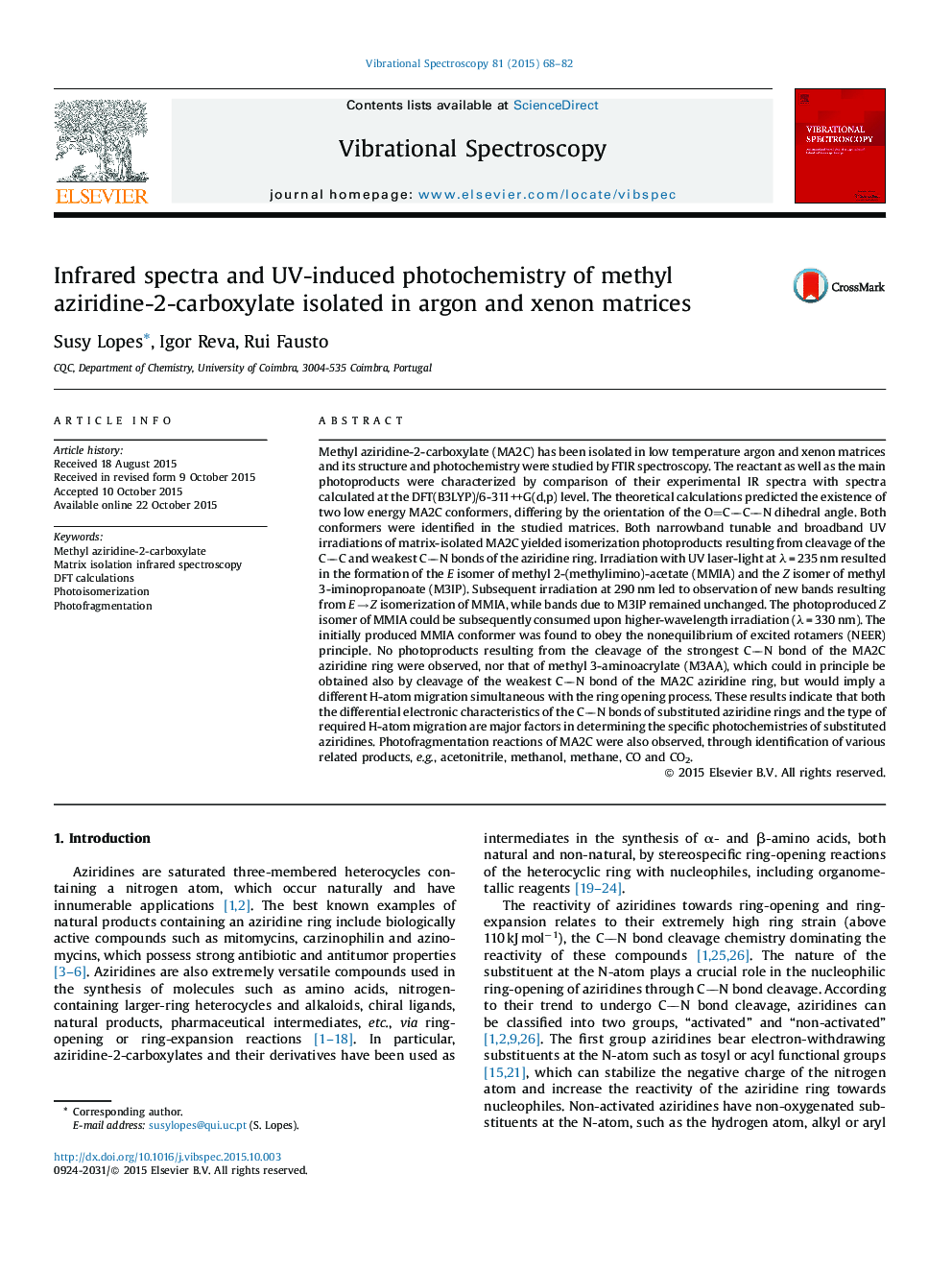| Article ID | Journal | Published Year | Pages | File Type |
|---|---|---|---|---|
| 1250227 | Vibrational Spectroscopy | 2015 | 15 Pages |
Methyl aziridine-2-carboxylate (MA2C) has been isolated in low temperature argon and xenon matrices and its structure and photochemistry were studied by FTIR spectroscopy. The reactant as well as the main photoproducts were characterized by comparison of their experimental IR spectra with spectra calculated at the DFT(B3LYP)/6-311++G(d,p) level. The theoretical calculations predicted the existence of two low energy MA2C conformers, differing by the orientation of the OCCN dihedral angle. Both conformers were identified in the studied matrices. Both narrowband tunable and broadband UV irradiations of matrix-isolated MA2C yielded isomerization photoproducts resulting from cleavage of the CC and weakest CN bonds of the aziridine ring. Irradiation with UV laser-light at λ = 235 nm resulted in the formation of the E isomer of methyl 2-(methylimino)-acetate (MMIA) and the Z isomer of methyl 3-iminopropanoate (M3IP). Subsequent irradiation at 290 nm led to observation of new bands resulting from E → Z isomerization of MMIA, while bands due to M3IP remained unchanged. The photoproduced Z isomer of MMIA could be subsequently consumed upon higher-wavelength irradiation (λ = 330 nm). The initially produced MMIA conformer was found to obey the nonequilibrium of excited rotamers (NEER) principle. No photoproducts resulting from the cleavage of the strongest CN bond of the MA2C aziridine ring were observed, nor that of methyl 3-aminoacrylate (M3AA), which could in principle be obtained also by cleavage of the weakest CN bond of the MA2C aziridine ring, but would imply a different H-atom migration simultaneous with the ring opening process. These results indicate that both the differential electronic characteristics of the CN bonds of substituted aziridine rings and the type of required H-atom migration are major factors in determining the specific photochemistries of substituted aziridines. Photofragmentation reactions of MA2C were also observed, through identification of various related products, e.g., acetonitrile, methanol, methane, CO and CO2.
Graphical abstractFigure optionsDownload full-size imageDownload as PowerPoint slide
